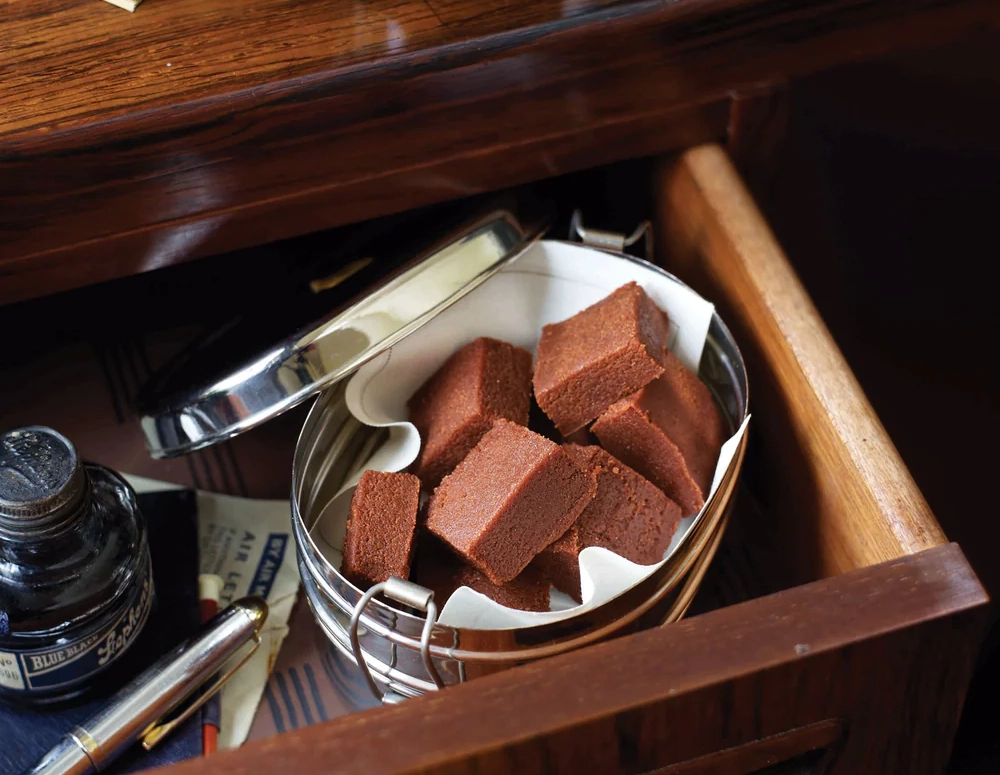
WHO CAN RESIST MELT-IN-THE MOUTH FUDGE? SWEET AND CREAMY, THIS POPULAR CANDY IS A WONDERFUL RAINY DAY RECIPE AND MAKES AN ADORABLE GIFT. HERE ARE OUR TOP TIPS FOR WHIPPING UP DELICIOUS FUDGE IN NO TIME!
When putting together recipes for Home Sweet Home, we thought it was about time to try out something a little bit different and added sweet candies like fudge, marshmallows and brittle to our collection.
Making your own sweets is a great opportunity to get more familiar with sugar work and if you get more confident you’ll be well on your way to making a whole array of sweet goodies.
Beautifully wrapped homemade fudge (if you can bear to give any away!) is always well received and lots of fun to make yourself. It also keeps well if stored in an airtight container in a cool dry place, certainly longer than cakes or cookies.
Fudge is often seen as tricky to make, but it is easy once you understand how sugar reacts when heated to certain temperatures.
In the past, home bakers would often learn to make sweets like fudge by watching older generations in the kitchen – this experience is particularly important with sugar recipes as cooking with sugar requires a good deal of observation. For this reason, we insist on an accurate sugar thermometer when cooking with sugar to keep an eye on the temperature.
There are several stages to cooking fudge and it is important to watch the pan closely and to increase or reduce the heat as necessary to avoid spoiling the sugar mixture.
Once sugar has been overheated it is very difficult to get the previous consistency back. Here are our troubleshooting tips on how to get the perfect fudge:
Grainy fudge?
Fudge should be smooth and creamy but it can turn grainy. This is due to the formation of sugar crystals.
To avoid this, make sure you don’t stir the sugar mixture as it comes up to temperature and refrain from stirring as it cools back down after the butter is added. Also, make sure it doesn't get too hot, too fast.
Gloopy fudge?
If the fudge gets starts to get gloopy at the bottom of the pan but the top of the sugar mixture stays runnier, it is heating much too quickly on the underside of the pan and the temperature is too high.
If it gets too thick or burns, it’s hard to rescue, so we recommend starting again. Sugar work is very technical and takes practise, so keep trying and you’ll have irresistible fudge in no time!
Hard fudge?
It could be that your fudge is overcooked and this causes the sugar to harden.
A sugar thermometer will help you to check it reaches the correct temperature which is the soft ball stage at 112 to 116 °C (234 to 241 °F). If it exceeds this, it is heading for a much chewier consistency.
Soft fudge?
It is possible your sugar mixture didn’t heat to a high enough temperature to get to soft ball stage (the stage at which the sugar forms a soft, easily pressed ball when a small amount is dropped into cool water).
Use a sugar thermometer to check and reheat until it reaches soft ball stage, which is 112 to 116 °C (234 to 241 °F).
For more baking advice and frequently asked questions, visit our FAQ pages here.
Follow us on
 hummingbbakery
hummingbbakery





